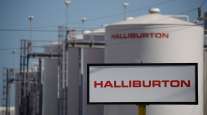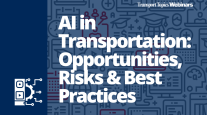Colonial Pipeline Restarts Operations, but Normalcy Days Away

[Stay on top of transportation news: Get TTNews in your inbox.]
The nation’s largest fuel pipeline restarted operations May 12, days after it was forced to shut down by a gang of hackers.
The disruption of Colonial Pipeline caused long lines at gas stations in the Southeast due to distribution problems and panic-buying, draining supplies at thousands of gas stations.
Colonial said in a statement that “all lines, including those lateral lines that have been running manually, will return to normal operations.”
But it will take several days for deliveries to return to normal, the company said.
In the meantime, drivers have been finding gas stations with little or no gas in some Southeast states.

The Colonial Pipeline, which delivers about 45% of the fuel consumed on the East Coast, was hit on May 7 with a cyberattack by hackers who lock up computer systems and demand a ransom to release them. The hackers didn’t take control of the pipeline operations, but Colonial shut the pipeline down to contain the damage.
The attack raised concerns, once again, about the vulnerability of the nation’s critical infrastructure.

Evan Vucci/Associated Press
READ MORE
- More Stations in Southeast Running Out of Gas
- Biden Waives Some Gasoline Mandates to Address Fuel Shortage
- Pipeline Officials Hope Most Service Will Be Back by Weekend
- Biden Says Russia Has ‘Some Responsibility’ in Colonial Attack
- FMCSA Issues Emergency Declaration to June 8 Due to Pipeline Cyberattack
- Cyberattack on US Pipeline Linked to Criminal Gang
“What you’re feeling is not a lack of supply or a supply issue. What we have is a transportation issue,” said Jeanette McGee, spokeswoman for the AAA auto club. “There is ample supply to fuel the United States for the summer, but what we’re having an issue with is getting it to those gas stations” because the pipeline is down.
The pipeline runs from the Gulf Coast to the New York metropolitan region, but states in the Southeast are more reliant on it. Other parts of the country have more sources to tap. For example, a substantial amount of fuel is delivered to states in the Northeast by massive tankers.
Multiple U.S. agencies coordinated to relax rules and enable fuel to be shipped faster using trucks, trains or ships, but those changes had little impact May 12.
The White House said the Department of Transportation is now allowing states served by the pipeline to use interstate highways to transport overweight loads of gasoline and other fuels. But there’s a national trucker shortage, so the industry isn’t able to put many more trucks on the road.
Nationwide there are about 121,000 convenience stores that sell about 5,300 gallons per day of gasoline, accounting for about 80% of retail fuel sales.
Want more news? Listen to today's daily briefing below or go here for more info:




